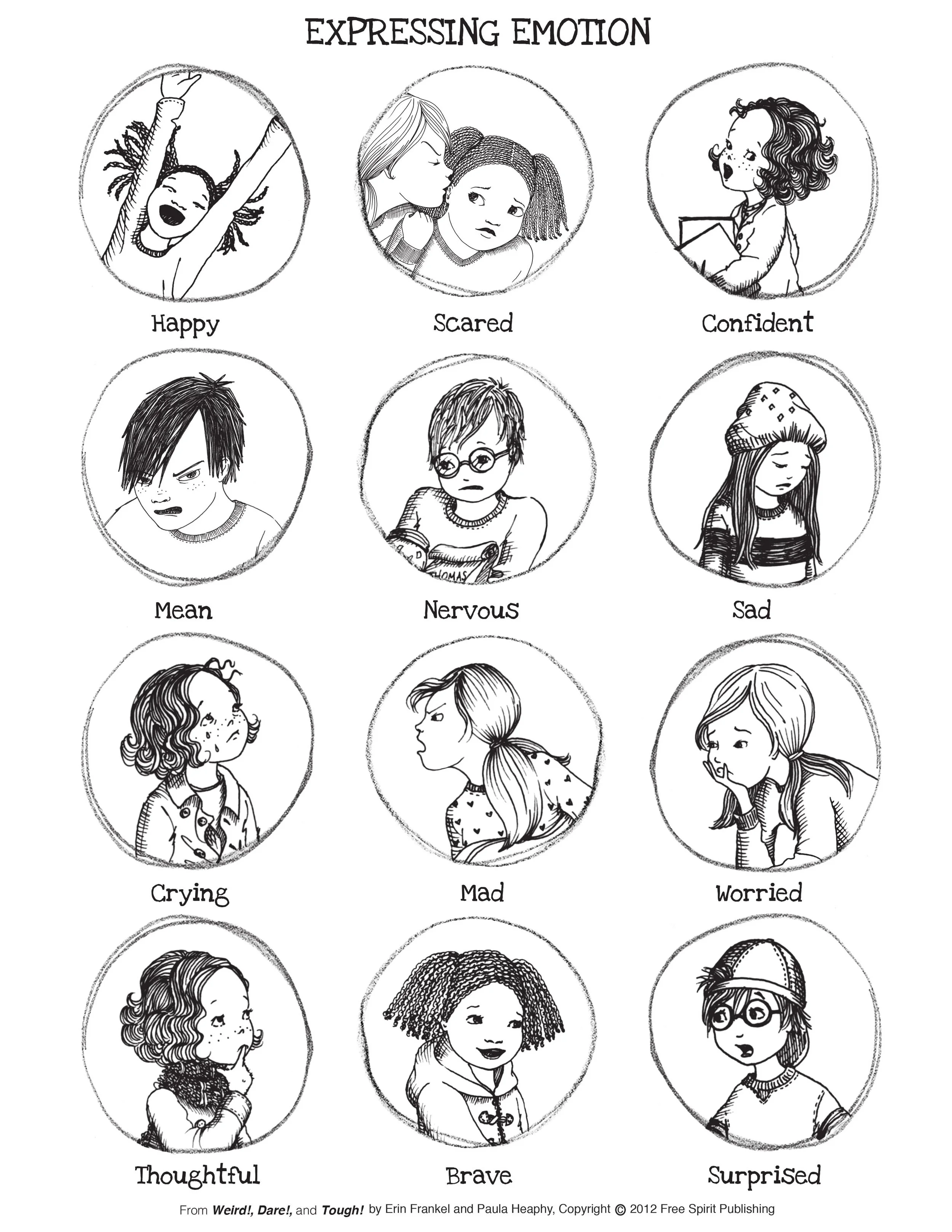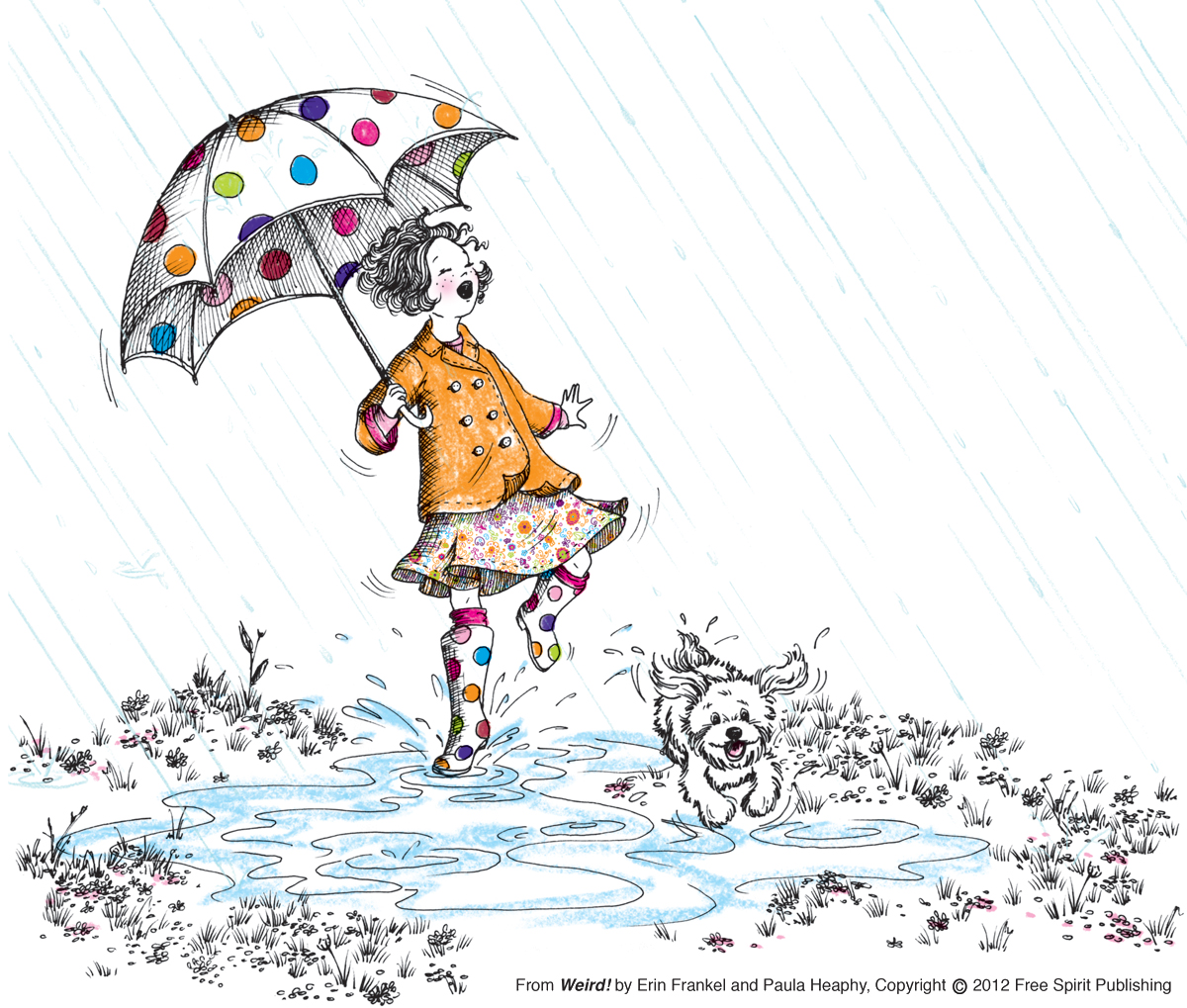Ms. Drew is recognized around the world as an expert on conflict resolution and peacemaking for schools, workplaces, and families.
This interview was originally posted April 4, 2013 at http://authornaomidrew.blogspot.com/
AMAZING BOOKS TO HELP PARENTS AND TEACHERS COMBAT BULLYING
ND: Tell
us about the amazing fiction series you've written on bullying for younger
kids.
EF: It’s
been a wonderful experience working with lifelong friend, Illustrator Paula
Heaphy, and Free Spirit Publishing to create the Weird series: Weird! Dare! and
Tough!. The
books are true-to-life stories of
bullying told from three perspectives: the target, the bystander, and the child
doing the bullying. Paula and I had our own personal experiences with bullying
and we wanted to use our experiences and talents to help make a difference. Weird! tells the story of an
amazing little girl named Luisa, who changes everything about herself to avoid
being bullied.
We wanted to explore the roles that the bystander and the child doing the
bullying played in helping Luisa get back to herself. This is how Dare! and Tough! came to life. We let the
characters take us where they needed to go, and in doing so, I think the end
result is a real sense of learning and healing from all three perspectives.
ND: The
Weird series is completely unique in terms of books on bullying for younger
children. What can this series help parents and teachers do in a way that no
other books can?
EF: Bullying
doesn’t involve just one person. The Weird series helps parents and teachers
dig deeper into the roles that we all play in putting an end to bullying. The
books can be read separately or as a set, and regardless of the order in which
they are read, each perspective opens a pathway to the other two books. If
children wonder why the bystanders don’t speak up at first, or why the child
doing the bullying acts so mean, or how the bullying made Luisa feel, parents
and teachers can turn to the other books to help find answers. The stories and
illustrations are engaging and true-to-life, which means children will relate
to the characters and want to know more about their struggles. Each book
includes ‘activity club’ pages and discussion ideas which gives parents and
teachers even more ways to explore the topic of bullying with children.
ND: What are some important
things that parents need to know if their child is being bullied?
EF: Here
is what I have learned. Bullying
can affect every area of your child’s life. If your child is being bullied,
don’t ignore the signs. For example, is your child suddenly more withdrawn or
acting out of character? Has your child’s sleep habits changed? Have you
noticed any unexplained physical injuries or does your child ask to stay home
from school often? Targets of bullying are often ashamed and afraid to speak up
about bullying. Help your child open up, and ensure them that things will not
get worse as a result of doing so. Don’t assume that things will just get
better, you must make sure that they do. Practice confidence building and
assertiveness strategies with your child to help them regain some of the
confidence that bullying has most likely taken away. But most importantly, see
to it that the school’s plan of action to stop the bullying is one that keeps
your child’s dignity and safety intact. For example, your child should not be
forced to sit down and work things out with his/her tormentor - doing so will
only re-traumatize your child.
Also, any physical changes that are made in terms of seating
arrangements, class adjustments, etc. should be aimed at the child doing the
bullying, not the target. Your child did
not choose to be bullied and should not be the one inconvenienced or singled
out. Educate yourself on best practices when it comes to bullying and don’t be
afraid to share this knowledge with your child’s school. Here are a few
websites for starters:
http://www.stopbullyingnow.com/index.htm
http://www.bullying.org/#
http://www.stopbullyingworld.org/
ND: How
can teachers and parents help kids resist bullying their peers and classmates?
EF: The
greater the empathy, the greater the resistance to cruelty. To build empathy,
it’s important to provide children with experiences and opportunities which
allow them to put themselves in someone else’s shoes. Children who bully often
experience a disconnect between their behavior and the effect that their
behavior has on other people’s feelings. If children can define and understand
their own feelings, it will be easier for them to take on another person’s
perspective and not only think about someone else’s feelings...but actually feel them. When feelings are
put into the equation, bullying becomes less likely.
ND: What
can parents do to help their children avoid becoming a target of bullying?
EF: I
think it is important to start talking about bullying early on. We need to
raise awareness so that bullying doesn’t catch children ‘off guard.’ When
asking children how they handled a bullying situation, they often respond, “I
didn’t know what to do.” Our reflection and dialogue regarding bullying must be
such that children have no question about what to do. And then we need to explore how to do it. We can start by
helping children develop a strong sense of who they are and what they stand
for. We can also help children develop positive self-talk in order to build
confidence or regain confidence in the face of bullying. If we raise awareness early
on, and cultivate empathy in doing so, then children won’t have to be ‘on
guard.’ They can be who they are within a supportive culture of kindness rather
than one of cruelty. They can go back to being kids.
ND: What else do you want to share with us?
EF: Before
writing the Weird series, my understanding of bullying came from personal
experiences as a child, mother and teacher. While working on the books, I felt
a deep responsibility to further that understanding - given the seriousness of
the topic. I turned to the research and experience of individuals who have made
a difference in bullying research and prevention. It would be impossible to
mention everyone. But if I could share a few with parents and teachers: Barbara
Coloroso, Stan Davis, Michele Borba, Rosalind Wiseman, Trevor Romain, and ...
Naomi Drew!
ND: Can
these books be used in homes as well as school?
EF: Absolutely.
I think the impact of the stories can be felt no matter where they are read. In
fact, the series includes activity club pages that are appropriate for either
setting. Wherever the books are used, I think the most important part is that
children have the opportunity to revisit the characters and their struggles
from time to time. So, I would suggest reading the books anywhere, but keeping
them easily accessible!
ND: What
can teachers do to prevent bullying in the classroom?
EF: They
can send a very clear message that bullying will not be tolerated and define
expected behavior in the classroom and school. They can put kindness and
respect at the top of the list and work together with students to create a
shared understanding of what kindness and respect look like. It is important to
reflect on the expectations and labels that we may attach to students. If we
put students down or treat them unfairly, then students will follow our
example. If we want to prevent
bullying in the classroom, we must lead the way by modeling empathy, kindness
and respect. We can provide
students with opportunities to do well for and by each other by creating shared
projects and initiatives that build friendship and trust.
ND: What
can a child do if he/she is being bullied?
EF: First
and foremost, they can remind themselves that it is not their fault that they
are being bullied. They can
identify caring adults who they feel they can trust and tell them about the
bullying. Ideally, that caring adult will be trained to know how to help or how
to get the help that is needed to stop the bullying. However, if this is not
the case, children need to know that they did the right thing in telling. It is
important to reassure children of this and then get them the help they were
seeking. It takes a lot of courage for a child to speak up about bullying, so
we need to work hard to ensure that a child doesn’t have to look elsewhere for
help. We need to be that person - that first person- who not only cares enough to make a
difference but knows how.
ND: What
are some of the confidence building exercises you recommend in your books?
EF: There
are a variety of fun, interactive activities that can be used whether reading
the books separately or together as a series. For example, in Weird!, children can join main
character, Luisa, in her Confidence Club and participate in activities that
work on positive self-talk and confidence building. In Dare!, main character, Jayla,
has a Courage Club with activities to help children feel prepared rather than
scared when it comes to standing up for someone. And in Tough!, Sam, the child doing the
bullying, has a Kindness Club with activities to help children reflect on the
impact that their words and actions can have on others. Back matter also
includes reflection questions and suggestions for teachers and parents on how
to use the series.
ND: If
a parent suspects their child might be bullying someone, what should they do?
EF: I
would say listen and be true to your instinct. This is important. Just as
children who bully may be in denial about their behavior, so may parents. No
one wants to think that their child may be bullying someone, but denying that
reality denies the child the chance to develop positive behavior and means that
the target of the bullying will continue to suffer. Remember, a child may only
be experimenting with bullying at early stages and parents have an opportunity
to help change gears before more hurt is done for all parties involved. If a
child is bullying someone, there is an unsolved problem that needs attention
and guidance. Parents will need to build awareness about the hurt that has been
caused, help children take responsibility for that hurt, and explore paths to
reconciliation.





























